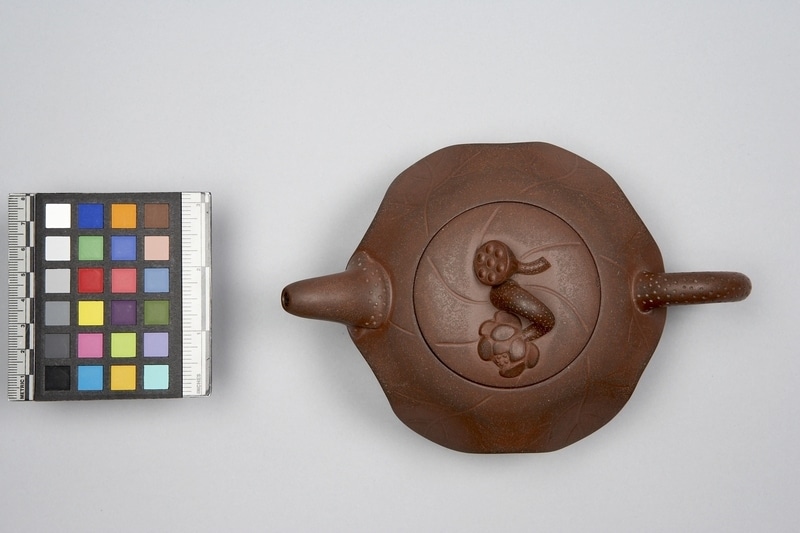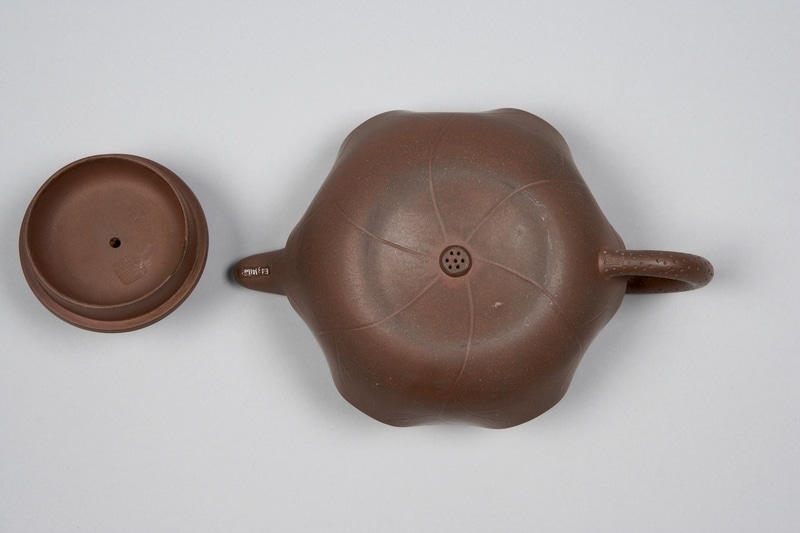Teapot Item Number: Edz1411 a-b from the MOA: University of British Columbia




Description
Brown teapot (part a) and lid (part b). In a compressed globular form in the shape of two lotus pads with incised veining, joined at the edges in a waving line. Short spout in form of stem, opposite handle also shaped as stem. Lid flush with surface of pot has a handle formed with adjoining decoration of lotus pads in high relief, flower in low relief. The is a circular impression on the base with seven small holes. There is an impressed mark in seal characters on inner surface.
History Of Use
The potteries producing I-Hsing Ware have been active for thousands of years, although use of the distinctive clay types peculiar to I-Hsing itself may date only to the beginning of the Ming Dynasty, 1368 C.E. Production has continued to the present time and includes glazed ware, particularly in a brilliant streaked blue-green, as well as the traditional form. The shapes of teapots can be classified in three main groups: those borrowed from archaic bronzes; those borrowed from nature; and those which are geometric. The circular impression with holes on the base suggest the entire teapot would sit in the hot water.
Iconographic Meaning
The lotus is a Buddhist symbol of purity and perfection.
Specific Techniques
The sandy clay, varying in shade from light yellow-brown through the best known red-brown to a dark brown-black, has the property of producing a hard lustrous surface when fired, and can therefore be used without glazing.
Item History
- Made in Jiangsu, China between 1800 and 1900
- Owned by Sotheby's before July 7, 1982
- Received from Fyfe-Smith Memorial Oriental Collection Fund (Funding source) and Sotheby's (Seller) on July 7, 1982
What
Who
- Culture
- Chinese
- Previous Owner
- Sotheby's
- Received from
- Fyfe-Smith Memorial Oriental Collection Fund (Funding source) and Sotheby's (Seller)
Where
- Holding Institution
- MOA: University of British Columbia
- Made in
- Jiangsu, China
When
- Creation Date
- between 1800 and 1900
- Ownership Date
- before July 7, 1982
- Acquisition Date
- on July 7, 1982
Other
- Item Classes
- ceramics
- Condition
- good
- Accession Number
- 0815/0002 a-b